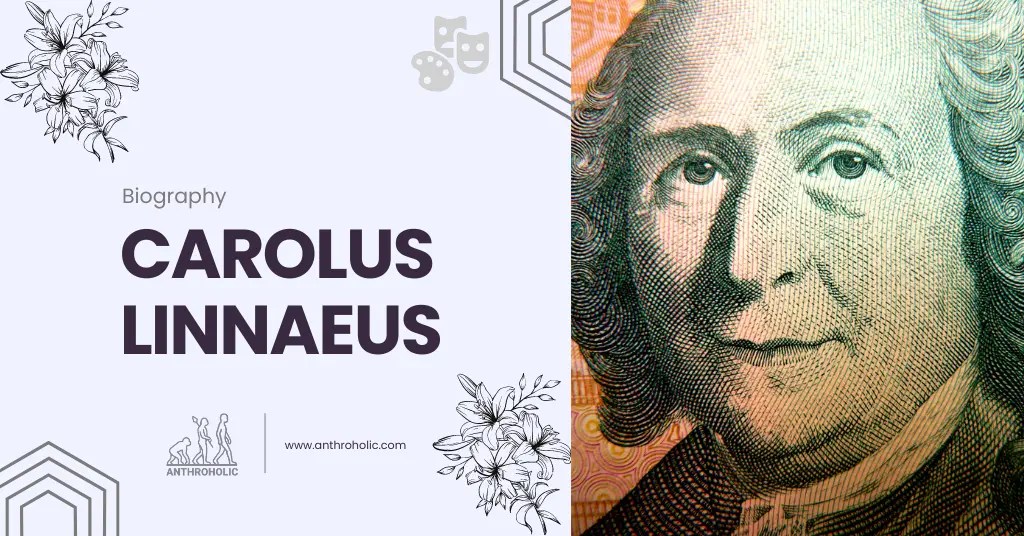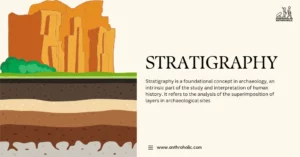AI Answer Evaluation Platform Live Now. Try Free Answer Evaluation Now
Carolus Linnaeus
Carolus Linnaeus was a Swedish naturalist and explorer who was the first to formulate guidelines for defining natural genera and species of organisms and to create a standardised system for naming them (binomial nomenclature). He is also credited with pioneering modern ecology. He has earned the title of “father of modern taxonomy” (London, L. S. O.,2022 ).

Early life of Linnaeus (Müller-Wille, S., 2023)
His father, Nils, was a devout Christian and an avid gardener. Carl, his little son, was frequently brought along as he taught him about botany (the study of plants) in the garden. Carl, who had his own garden by the time he was five, developed a strong interest in plants and their mechanisms.
Carl learned from Nils that each plant has a name. Plant names at the time were lengthy, detailed, and challenging to recall because they were written in Latin. Carl nevertheless made a commitment to mastering as many as he could. In actuality, he frequently showed less interest in his classroom studies and more interest in memorising plant names. Johan Stensson Rothman (1684–1763), Carl’s tutor, urged him to pursue medicine because of his enthusiasm for science and plants.
Carl Linnaeus transferred to Uppsala University in 1728 after spending a year studying medicine at the University of Lund in the hopes that the programme would be more beneficial.
He researched how minerals, plants, and animals are used in medicine. Olof Celsius, a theologian (religious studies) and a naturalist (natural history), was the first to observe him here. When Linnaeus was discovered studying in the university botanic garden by Celsius, the uncle of Anders Celsius (the creator of the Celsius thermometer), he was astonished to see that the young man was familiar with the names of all the nearby plants.
Since Linnaeus had little money, Celsius gave him a place to stay while he attended college and let him use his library. Olof Rudbeck (1660-1740), a professor, was so fascinated by an essay Linnaeus produced at the time on classifying plants according to their sexual organs that he requested Linnaeus to work as a teaching assistant for botany.
Career and his legacy (London, L. S. O. 2021)
In order to document and compile data on the nation’s natural resources, Linnaeus toured extensively throughout Sweden between the years of 1732 and 1735, concentrating in Lapland and northwest Sweden. He also urged his pupils to make use of this system. When Linnaeus finally travelled to the University of Harderwijk in Holland in 1735, he was still a student and continued to lecture at Uppsala in between his fieldwork. He earned his medical degree there quite fast. The following three years were primarily spent in Holland, with brief excursions to Germany, France, and England.
While in Holland, he oversaw the zoo and gardens owned by the wealthy banker George Clifford. During this time, Linnaeus was also able to publish the first of numerous scientific books and papers that he would later write.
Linnaeus went back to Sweden where he initially worked as a doctor in Stockholm. Then, in 1741, he was appointed a professor of botany at Uppsala University after getting married to Sara Lisa Moraea.
As a professor and scientist, Linnaeus was well-liked and respected. He was a dynamic teacher who surrounded himself with pupils, sending the most talented ones on exploratory trips. In order to bring back new plants and animals that Linnaeus would name using his new binomial nomenclature, his “apostles,” as he called them, travelled across continents. Some of them passed away in transit.
Linnaeus assumed the name Carl von Linné in 1758 after being made chief royal physician in 1747.
Near the end of his professional life, Linnaeus fell ill, and he passed away on January 10, 1778, only a few years after he had stopped working.
In addition to being known as the “Father of Taxonomy,” Linnaeus was also a pioneer in the field of ecology research. He was a pioneer in describing the interactions between living things and their surroundings.
How can we understand biodiversity?
Classification is the solution.
By classifying living things into clearly defined hierarchies and giving each one a unique name, we establish order, making it easier for us to understand the seemingly chaotic world of nature. Carl Linnaeus’ system of plant and animal names, which is still in use today, is his most significant contribution to science.
The binomial system uses a Latin genus name followed by a specific name (species) to identify each species of plant and animal.
Probably the most well-known scientific name given to humans by Linnaeus is Homo sapiens. Modern humans and closely related animals like Homo neanderthalensis (Neanderthals) belong to the genus Homo. We now know more about people thanks to two contributions made by Linnaeus:
- He came to the conclusion that Homo sapiens was an animal just like any other and classified them as members of the animal kingdom. This cleared the way, a century later, for Darwin’s theory of evolution.
- He categorised people into four separate “varieties” depending on skin colour and place of origin because he saw man as just another animal. These groups included “white” Europeans, “red” Americans, “tawny” Asians, and “black” Africans. At first, Linnaeus thought that these variants were the result of various climatic conditions. As a result, he also identified a “alpine” variant (Homo alpinus), which included the Swiss who lived high in the Alps and the Sámi in the North. However, he proposed more hierarchical views based on variations in innate moral and intellectual capacities, particularly with the twelfth edition of Systema naturae (1766), which helped give rise to scientific racism.
Over 12,000 plant and animal species were given names by Linnaeus, though some of those names had to be changed as a result of new information. The two most well-known publications of Linnaeus, Species plantarum (1st edition, 1753) and Systema naturae (10th edition, 1758), are still used by scientists as the foundation for naming plants and animals. Linnaeus wrote other volumes employing his new system of classification.
Works
The first edition of Linnaeus’ most well-known work, the Systema Naturae (Systems of Nature), was published in 1735, when he was 28 years old. He separated the living universe into the three kingdoms of animals, plants, and minerals in this book.
Before Linnaeus, people believed that humans were created by God as superior beings, and that animals were only made for human benefit. Linnaeus was the first naturalist to include humans as part of the animal world. In response to their challenge to identify a genuine bodily distinction between a human and an ape, Linnaeus classified humans with mammals and primates.
In the course of Linnaeus’ lifetime, Systema Naturae was printed 12 times. Every new version got wider and broader and contained additional material. Humans were separated into four “varieties” in Linnaeus’ categorization of the species for the first nine editions (1735–1756).
- White European: Europaeus albus
- Rubescens Americanus: American-style red
- Fuscus Asiaticus: Africanus niger:
- African black Africanus tawny: Asian
The four types of people identified by Linnaeus correlate to the then-known continents of Europe, America, Asia, and Africa.
When referring to other animal species, Linnaeus used the term “sub-species,” but he used the word “varieties” for human species. Linnaeus recognised that there was only one species of people, with differences in appearance based on temperature and environment. In these first nine editions, Linnaeus devotes all of his attention to geography and shares contemporary notions that climate is a chance, external factor that significantly determines skin tone.
Orbis eruditi judicium de Caroli Linnaei– ‘Opinion of the learned world on Carl Linnaeus. The Linnean Society of NSW gave this little 1740 pamphlet in octavo size to the State Library of New South Wales in 2018. This is regarded as one of Linnaeus’s rarest papers and was essential to advancing his career by winning his position as a professor of medicine at Uppsala University. He developed his revolutionary new idea of categorising and identifying creatures from this standpoint, which is why he is regarded as the father of modern taxonomy.
Other works
- Species Plantarum
- Genera Plantarum
- Philosophia Botanica
Approximately the course of his career, Carl Linnaeus is thought to have given names to approximately 12,000 different creatures. Over 4000 of them are thought to have been animal names. However, many of these species names have changed over time to take into account new knowledge about the species. Many of the species names he gave are no longer used.
Conclusion
Linnaeus was the first to openly acknowledge the close resemblance between humans and apes, a contentious notion that Charles Darwin later fully developed. Nevertheless, Linnaeus wasn’t always able to tell the difference between fantastical and actual species or unbelievable and plausible theories. His view of “cause and effect” was constrained by Cartesian mechanistic philosophy and the dominant Lutheran theology. In addition to being a taxonomist, Linnaeus was a practising physician, agriculturalist, and land surveyor. His research on pearl culture and animal and plant breeding anticipates modern economic biology and biotechnology. The basis of many other later fields can be seen in the vast volume of Linnaeus’ correspondence, manuscripts, and books. The following are some of them: anthropology, biogeography, bioinformatics, biomechanics, biological control, conservation, ecology, epidemiology, Darwinian evolution, ethnography, medical diagnostics, microbiology, palaeontology and phylogenetics (Reid, 2009).
References
- Caddy, F. (1887). Through the Fields with Linnæus, a Chapter in Swedish History.
- Carolus Linnaeus – New World Encyclopedia. (n.d.). https://www.newworldencyclopedia.org/entry/Carolus_Linnaeus . Accessed on 21 May 2023.
- Charmantier, I. (2011). Carl Linnaeus and the Visual Representation of Nature. Historical Studies in the Natural Sciences, 41(4), 365–404. https://doi.org/10.1525/hsns.2011.41.4.365 . Accessed on 21 May 2023.
- Egerton, F. N. (2007). A History of the Ecological Sciences, Part 23: Linnaeus and the Economy of Nature. Bulletin of the Ecological Society of America, 88(1), 72–88. https://doi.org/10.1890/0012-9623(2007)88 . Accessed on 21 May 2023.
- Famous Scientists. (2018, August 15). Carolus Linnaeus – Biography, Facts and Pictures. https://www.famousscientists.org/carolus-linnaeus/ . Accessed on 21 May 2023.
- London, L. S. O. (2021, October 25). His career and legacy. The Linnean Society. https://www.linnean.org/learning/who-was-linnaeus/career-and-legacy . Accessed on 21 May 2023.
- London, L. S. O. (2022, March 28). Who was Linnaeus? The Linnean Society. https://www.linnean.org/learning/who-was-linnaeus . Accessed on 21 May 2023.
- Müller-Wille, S. (2023, May 19). Carolus Linnaeus. Encyclopedia Britannica. https://www.britannica.com/biography/Carolus-Linnaeus . Accessed on 21 May 2023.
- Reid, G. (2009). Carolus Linnaeus (1707-1778): his life, philosophy and science and its relationship to modern biology and medicine. Taxon, 58(1), 18–31. https://doi.org/10.1002/tax.581005 . Accessed on 21 May 2023.
- Thomson, T. (1812). History of the Royal Society: From Its Institution to the End of the Eighteenth Century.



